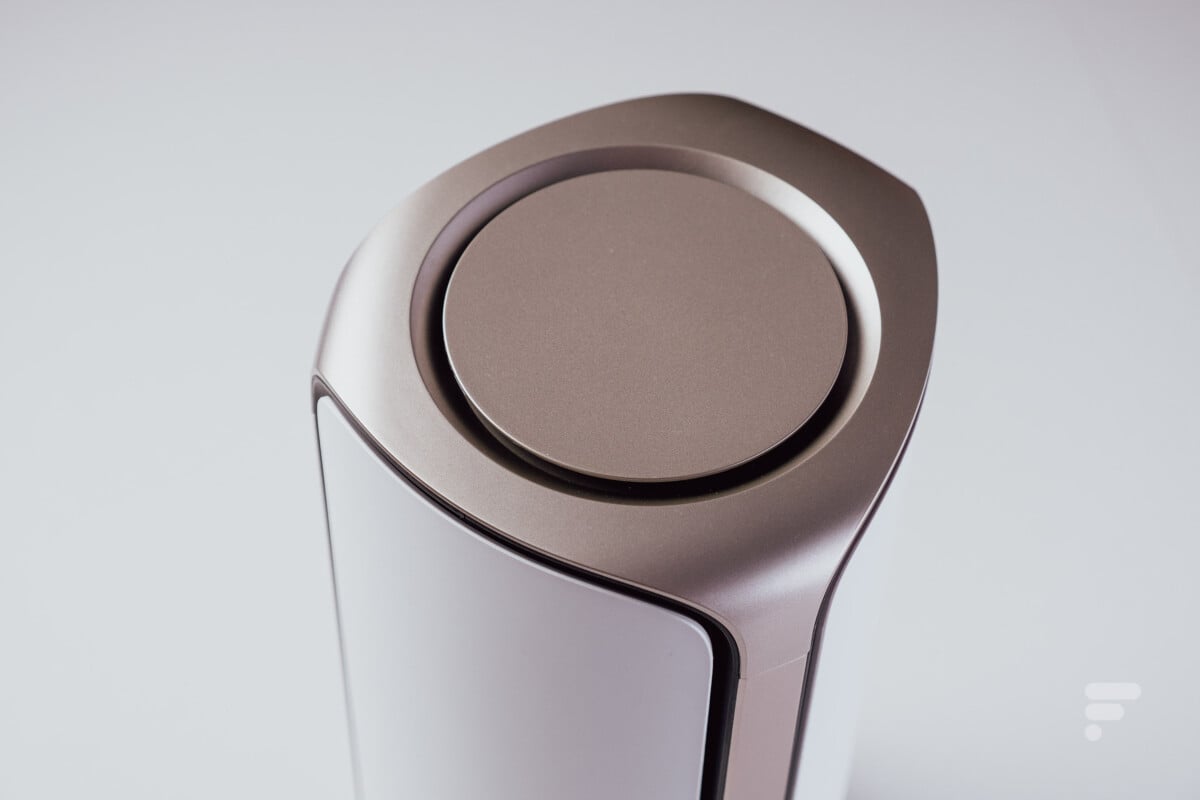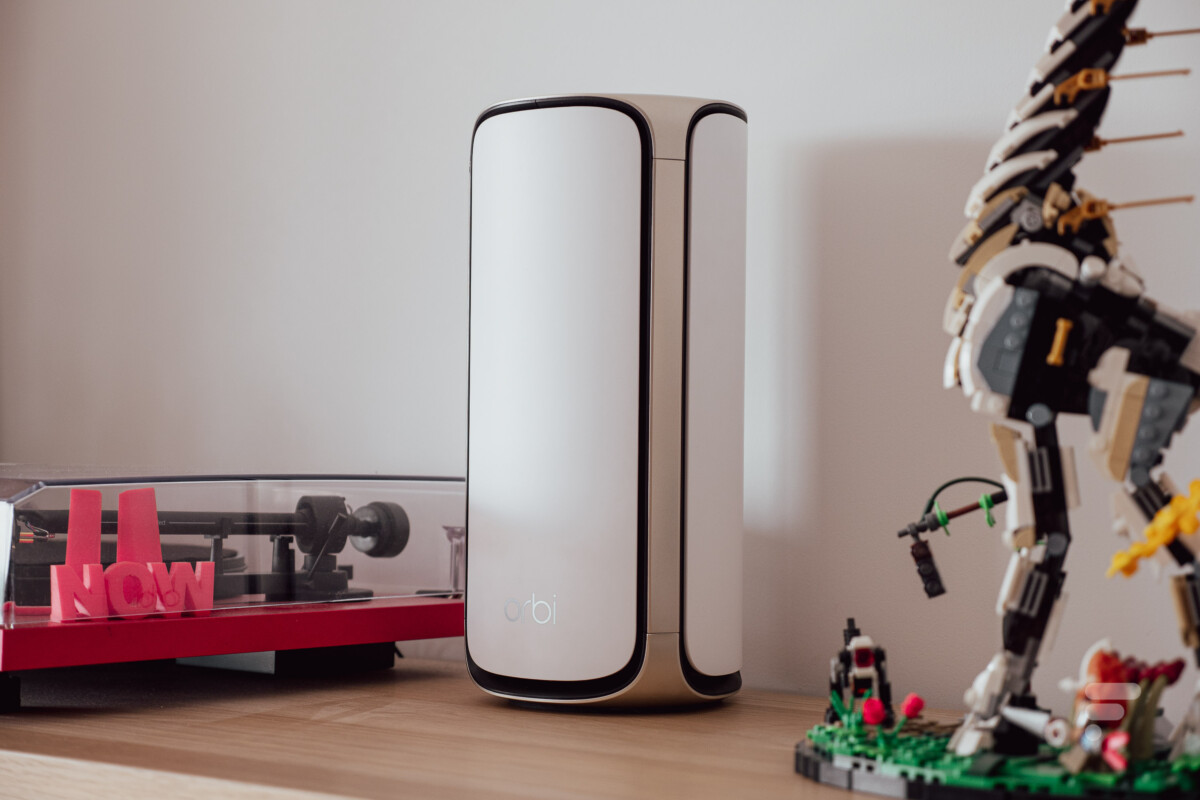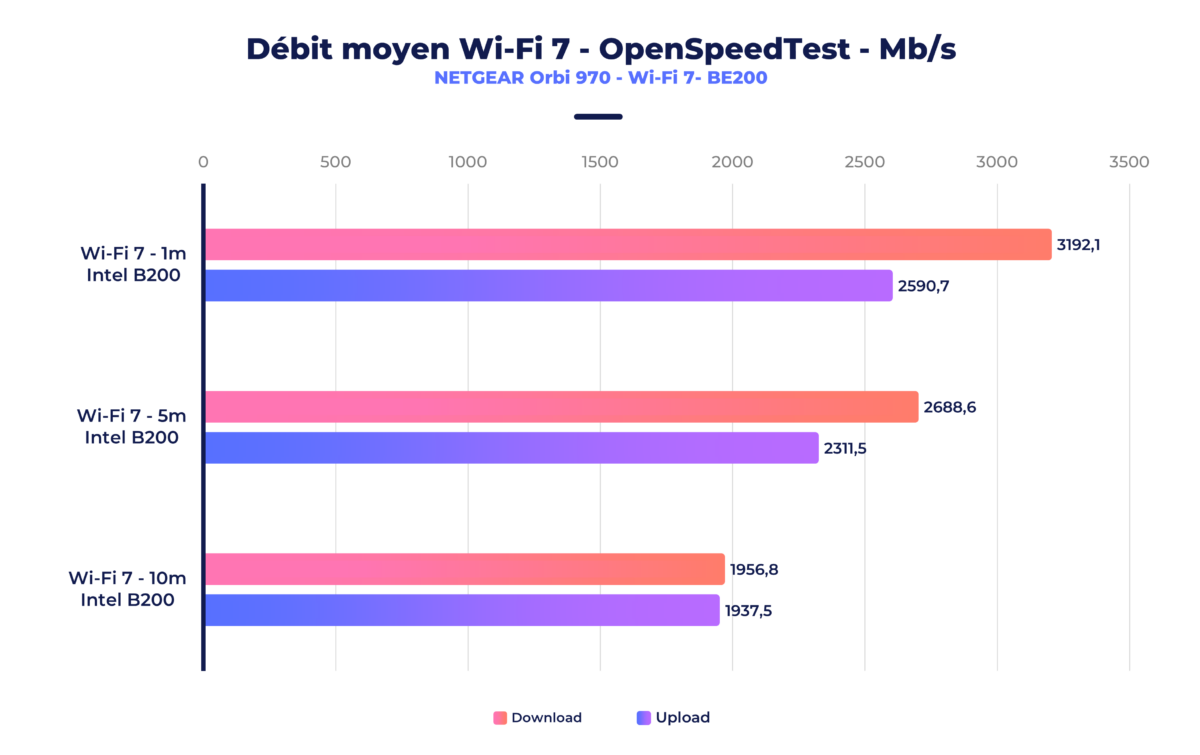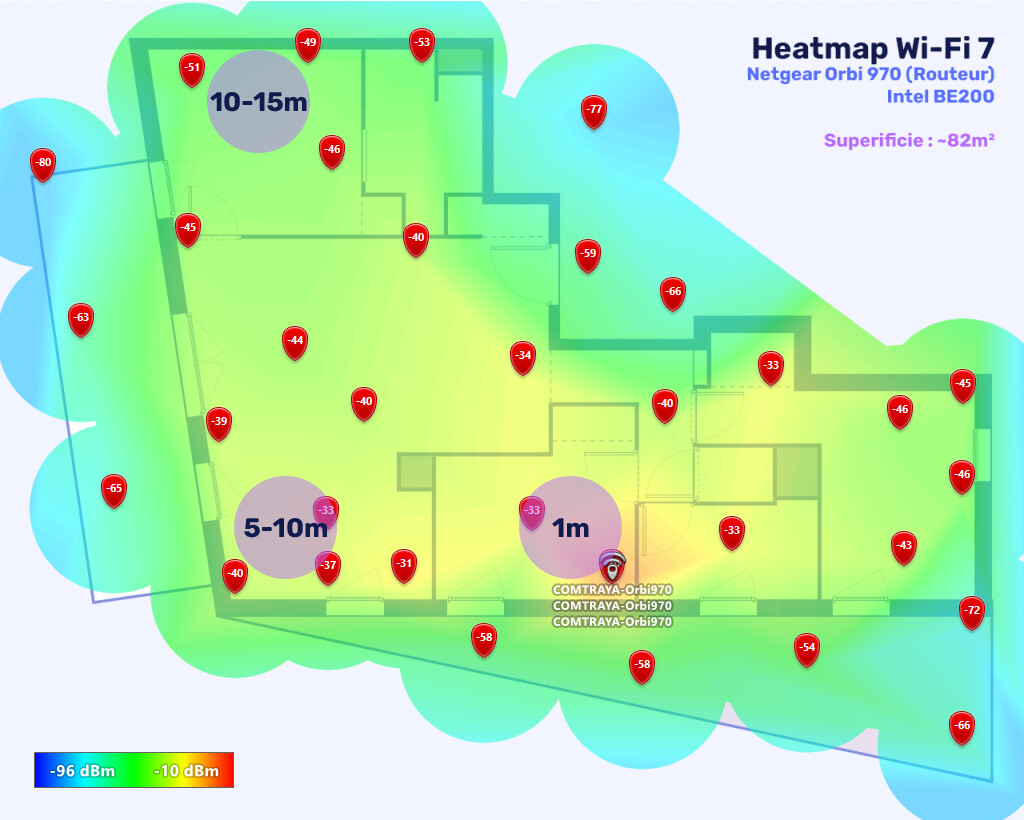A sign that Wi-Fi 7 is well and truly launched, Netgear’s Orbi range is evolving and embracing the standard with the arrival of the Orbi 970 set. The quad-band kit that we are testing today is composed of a router and two satellites which carry the best from the American manufacturer.
On the menu: 12 antennas for optimal diffusion of Wi-Fi 7 or even 10 GbE and 2.5 GbE ports on each box. All this, combined with the ease of use of Orbi products that we have known and tested for several years now.
The Orbi range is now closer to the Nighthawk routers with a particularly large tower format. If it impresses with the imposing size of its cases, this Netgear Orbi 970 kit also reaches a new price peak since it is offered for the “ flirtatious » sum of 2400 euros. The price of excellence?
Netgear Orbi 970 (WiFi 7) Technical sheet
| Model | Netgear Orbi 970 (WiFi 7) |
|---|---|
| Wireless | Wi-Fi 7 |
| Maximum wifi speed | Throughput: 27 – Unit: Gbit/s |
| WiFi coverage | 900 m² |
| Maximum number of connected devices | 200 |
| Mesh system | Yes |
| 4G compatibility | No |
| 5G compatibility | No |
| Number of ethernet ports | 6 |
| Maximum Ethernet throughput | 10 Gbps |
| RAM | 2 GB |
Product sheet |
This test was carried out using a product loaned by the brand.
Netgear Orbi 970 (WiFi 7) An even more imposing kit
Netgear offers here a notable evolution for the design of its Orbi range. The boxes abandon the shark fin format to get a little closer to what we find on the Nighthawk RS700S router (and the competition). A choice certainly made to stand out from previous ranges and offer more space for the numerous antennas necessary to obtain the announced performances.
Visually identical, the router and its satellites are particularly imposing and measure almost 30 cm high and just under 15 cm in diameter. Always made entirely of plastic, they feature a champagne-colored chassis decorated with three white plastic faces detached from the chassis with an effect of depth which gives character to the whole. A special black edition is also available for sale on the manufacturer’s website.

As always, a perfectly integrated light zone is found on the front of each case and allows you to know the status of the device at a quick glance. This remains illuminated during the configuration steps or in the event of a problem with the devices.
Netgear always distinguishes between the router and its satellites, which therefore do not have, and it is a shame, the same connections. The router is perennially best off with two 10GbE RJ45 ports, paired with four 2.5GbE ports. On the satellite side, you have to make do with a single 10 GbE port and two 2.5 GbE ports. This is better than the Orbi 960 kit, but we find the same technical limitation on the kit made up of three devices.

Source: Edouard Patout for Frandroid

Source: Edouard Patout for Frandroid
With only one 10 GbE port available on the router (the other being dedicated to connecting to the box), it is impossible to connect the two satellites to the latter in 10 GbE. Certainly, the advantage of a Mesh kit is to use Wi-Fi to connect the boxes, but the wired connection allows optimal performance to be obtained. At 2400 euros per kit, it is a shame not to have the necessary connections to create a backhaul 10 GbE wired.

Beyond network connectivity, the Orbi 970 kit skips the practical USB ports to simply share a hard drive or a printer. Only the proprietary power connector accompanies the various RJ45 ports and the traditional button dedicated to synchronizing the boxes.
Netgear Orbi 970 (WiFi 7) Complete settings, via the web interface
The user experience offered by Netgear does not really change on this new Orbi 970 kit. The first configuration is carried out using the dedicated mobile application and is clear enough to be within everyone’s reach. Creating a Netgear account will be necessary as always to take advantage of all the features and the satellites are pre-paired to the router.
Once the kit is configured, the mobile application allows you to consult at a glance the overall status of the network as well as the list of connected devices. In terms of configuration, this is still as sparse as only Wi-Fi networks can actually be configured within it. The only real good point that we already found on previous ranges: the possibility of creating a network dedicated to connected objects, in order to separate them from the rest of the devices and guarantee optimal compatibility.
We always regret that Netgear hides most of the parameters of its Orbi kits behind a web interface whose existence you have to know (no mention is made in the mobile application). Thisweb interfaceis still as complete as ever and allows the kit to be carefully configured according to the user’s needs. It includes all the advanced settings of a good network device, with NAT management, routing and even the possibility of creating a VPN server. In principle, the kit is entirely capable of taking the place of an operator box, if the latter allows it.


On the security and parental control side, it’s the same story: these functions are hidden behind an annual subscription billed at 100 euros per year. Although this Netgear Armor suite is now available for a year, it is still surprising that all of these features are not accessible. free » on a kit sold for nearly 2400 euros.
However, and unlike most competitors, the Netgear Armor solution is truly comprehensive and goes beyond simply securing Orbi equipment. The user benefits here from a real antivirus suite that can be installed unlimitedly on all devices in the home (fixed and mobile). This possibility in itself justifies the pricing proposed by Netgear.
Netgear Orbi 970 (WiFi 7) Wi-Fi 7 that still impresses
On paper, the Orbi 970 boxes represent the best from Netgear. The kit benefits from four bands: one 6 GHz band, two 5 GHz bands and the historic 2.4 GHz band. The theoretical cumulative throughput is of the order of 27 Gb/s and the dedicated Wi-Fi link between the boxes reserves one of the two 5 GHz bands as well as part of the 6 GHz band thanks to MLO technology.
To test the performance of this Wi-Fi kit, we equipped ourselves with an Intel BE200 chip, installed in a laptop PC previously equipped with an Intel AX211 (Wi-Fi 6E) card. Our protocol consists of measuring the speeds at different locations in an apartment of approximately 80 m² with the router alone, as well as the overall coverage of the latter at different points. We also carried out some measurements with the satellites in order to measure the effectiveness of the dedicated link (Backhaul). In all cases, it is a second computer, equipped with a 10 GbE network card which acts as a server and which is therefore connected to the 10 GbE port of the router.

Note that, to bring us closer to the “reality“, we have not tested the bands independently. Thus, the various measurements were all carried out in Wi-Fi 7, with the default settings of the router and the laptop.
Approximately 1 m from the router, we manage to maintain a download rate of 3.2 Gb/s with peaks at 3.8 Gb/s and approximately 2.6 Gb/s in the other direction. By changing rooms, notably with a BA13 partition as an obstacle, the throughput remains at over 2.6 Gb/s without difficulty. Finally, by moving a little further away, the router manages to ensure almost 2 Gb/s stable. These values are impressive and we have never measured such results on a Wi-Fi kit.General public“.

These excellent results are particularly linked to the very good coverage provided by the router. The waves propagate without difficulty and without white zone over the entirety of our model apartment where the satellites are therefore not of much interest. Netgear also announces that the kit of three devices that we are testing would cover an area of 900 m². We were also able to validate the quality of the dedicated linkBackhaulbetween the router and its satellites by carrying out our usual throughput test with a computer connected by wire to the satellite positioned at our “10-15 m” measuring point. This test is however technically limited by our hardware which is confined here to a saturated 2.5 GbE port without difficulty during the measurement.
With such performance, the power consumption and the heat released by the kit are not negligible. This means that the router is always relatively hot, even when not in use. Its consumption tickles 20 W at rest and easily rises to 25 W at full load. The consumption of satellites is slightly lower.
Netgear Orbi 970 (WiFi 7) Price and availability of the Netgear Orbi 970 kit
The Netgear Orbi 970 kit consisting of a router and two satellites is available at the recommended price of 2,400 euros. The router alone is offered for 900 euros alone and 1700 euros with a single satellite.
Netgear Orbi 970 (WiFi 7) at the best price
